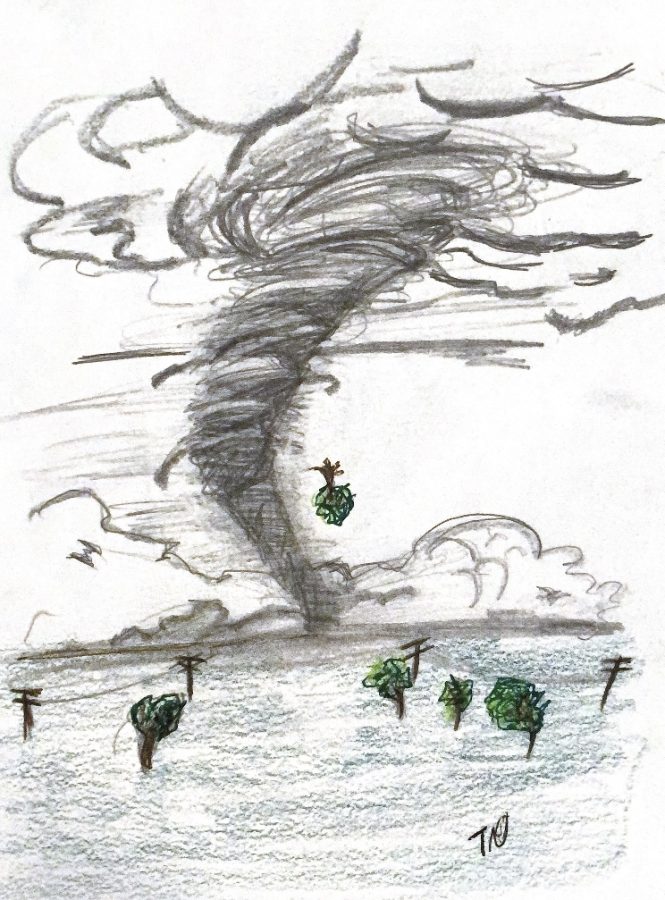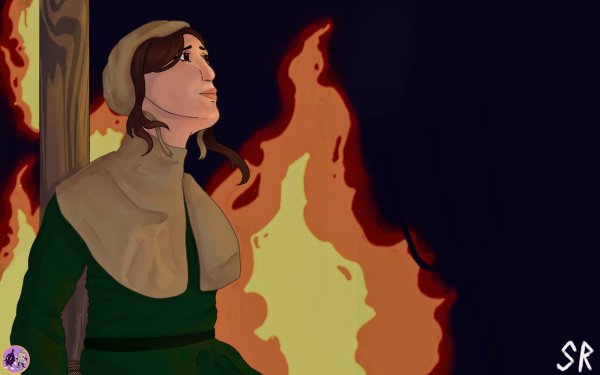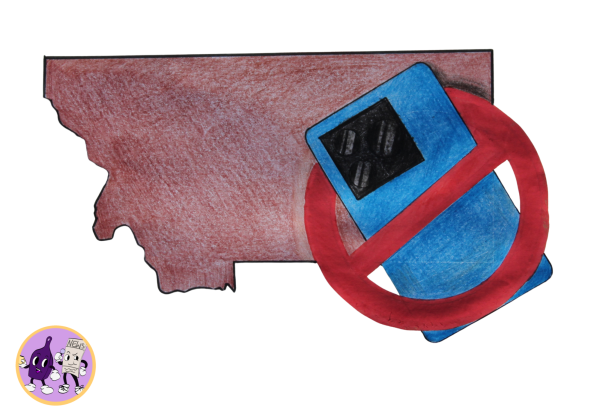THE DEVASTATION OF TORNADOES
As the southern states recover from deadly tornadoes, climate change is once again a topic coming into play.
A drawing of a tornado in a field with trees.
On Friday, the 24th of March, a large tornado swept through the town of Rolling Fork, Mississippi. The tornado was substantial in that it lasted for about an hour. Currently, the death toll for the storm sits at 26. Due to how recently the natural disaster occurred, many searches are being attempted to clear the rubble and hopefully find more survivors. On the Enhanced Fujita Scale, the tornado was marked as an EF4, which is second to most powerful.
The midwest has a very long history with these deadly disasters. Tornadoes form in flatter, more open areas, and these states are exactly that. Because of how many tornadoes seem to frequent this area, there’s a common map referred to as the ‘Tornado Alley’ map that depicts the areas with highest risk to the powerful storms. The area reaches from northern Texas all the way up to South Dakota, covering most of Oklahoma, Kansas, and Nebraska. Other states in the area are also at very high risk, however these five states bear the brunt of the load.
Most people who were old enough to process the news might remember the tornado in El Reno, Oklahoma, in 2013. The tornado dealt a lot of damage, and was listed as an EF3. Despite the rating that put it right in the middle, it was one of the most powerful tornadoes to date, with record-breaking winds at 296 miles per hour. Along with that, it was the widest tornado recorded in history. It stretched 2.6 miles across at its largest, and lasted for about 40 minutes. It flattened hundreds of homes and killed 8 people, injuring over 150 more. It cost upwards of 40 million dollars to repair all of the damages. Some videos can be found that depict the doom the tornado cast upon the Oklahoman city.
The most powerful tornado to date was the Tri-State Tornado, which was a large storm that spewed multiple different tornadoes. It happened nearly a century ago in 1925, and it had over a dozen confirmed tornadoes. The storm spanned across 219 miles. The states most affected were Missouri, Illinois, and Indiana. At least 695 people died. It’s unconfirmed, due to how long ago it happened. Thousands of others were injured on top of the deaths. If the storm had happened today, the damages would cost 1.4 billion dollars to repair.
The midwest and states surrounding it harbor some of the most dangerous weather known to man. There’s not really any way to stay completely safe. If you were to become caught in a tornado, it is recommended by the CDC to hide below ground (whether in a basement or bunker) and far away from any windows. Some people take the risk and drive as far away as possible. But even in following either of these, many have died. Tornadoes are capable of causing so much damage with their incredibly-high winds and ability to flatten homes and throw debris that it’s hard to determine if hiding in safer spaces will truly save you.
Tornadoes are some of the
deadliest disasters that exist
on this planet,
and many people find
themselves caught in one
at least once in their lifetime.
Shortly after the Rolling Fork tornado swept through the Mississippian town, President Joe Biden issued an emergency declaration. Efforts to aid in relief and reconstruction are underway as Biden himself stated he would go to Mississippi to see the recovery first-hand. The tornado flattened the rural town, reducing entire streets and homes to nothing but rubble. NPR shows a bunch of images (provided by Maxar Technologies) of the town before and after the disaster, and results are devastating.
This tornado was one of many that touched the ground in the southern states. A large storm swept through the week of the 19th through 26th of March, and brought with it powerful winds, hail, and disaster. The death toll currently across all tornadoes sits at 26, however that number could rise depending if recovery efforts bring in more bodies.
Amidst all of the frequent weather disasters that seem to hit the states, there comes the discussion about climate change. It’s becoming a lot more of a topic in today’s news, because more and more places are seeing weather changes come drastically one year after the other. Tornadoes themselves are affected, because as the conditions in the atmosphere change, so does the frequency of the twisters. Tornadoes can happen any time of the year as said by the National Severe Storms Laboratory, however their peak months vary between areas of the states. But we are coming to see them a lot more frequently. When the atmosphere is unstable, it increases the chance for a supercell. A supercell is the foundation of a tornado.
The scale of which tornadoes are graded is known as the Enhanced Fujita scale (or EF for short). The scale has five rankings, 0 to 5. 0 is the weakest, and 5 is the strongest. Wind speeds and damage are the main factors that contribute. The National Weather Service explains that they measure wind speeds through 3-second gusts, and in order to qualify on the scale, gusts need to reach 65 miles per hour and above. EF5 tornadoes must have gusts that go over 200 mph.
For anyone that may wish to help out people who are suffering from the damages of the recent tornadoes, the best thing they can do is spread awareness, and donate to any relief funds if they’re willing to. With government funding due to the emergency declaration, many recovery processes are already underway. But anything helps. Tornadoes are some of the deadliest disasters that exist on this planet, and many people find themselves caught in one at least once in their lifetime. It differs depending on where they live, but many others are affected. Understanding how our weather works and how deadly it really can be is a step forward. Climate change will affect everyone regardless of location, because as the earth’s atmosphere heats up, ice melts, the polar ice caps disappear, and sea levels rise. Summers are becoming hotter and hotter. The entire world will face the issues of climate change in this lifetime, and if society wants to keep this earth livable, there has to be something done about it.









